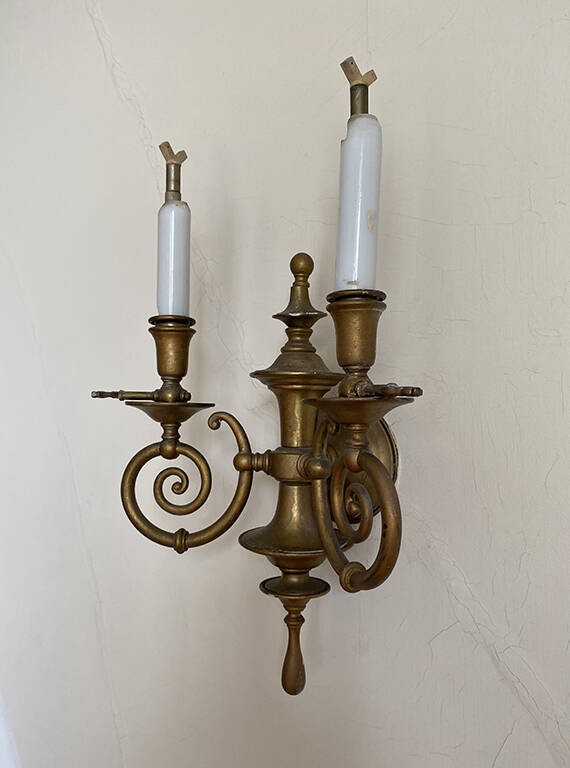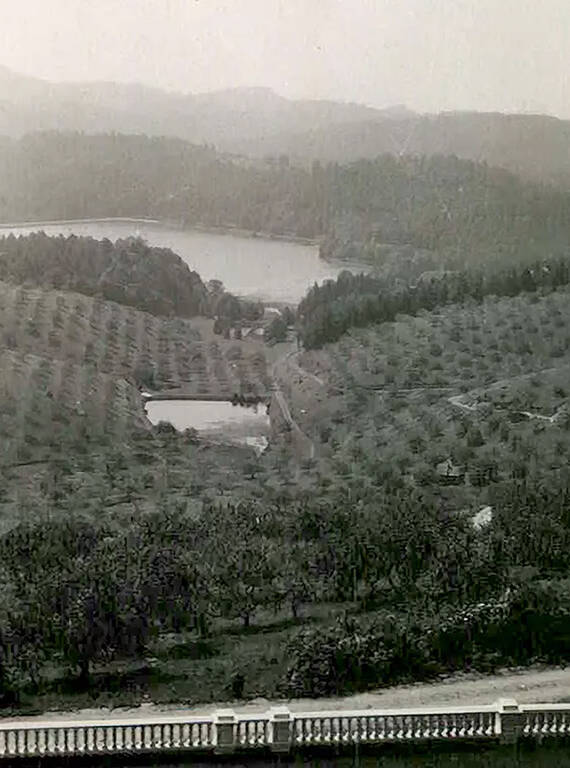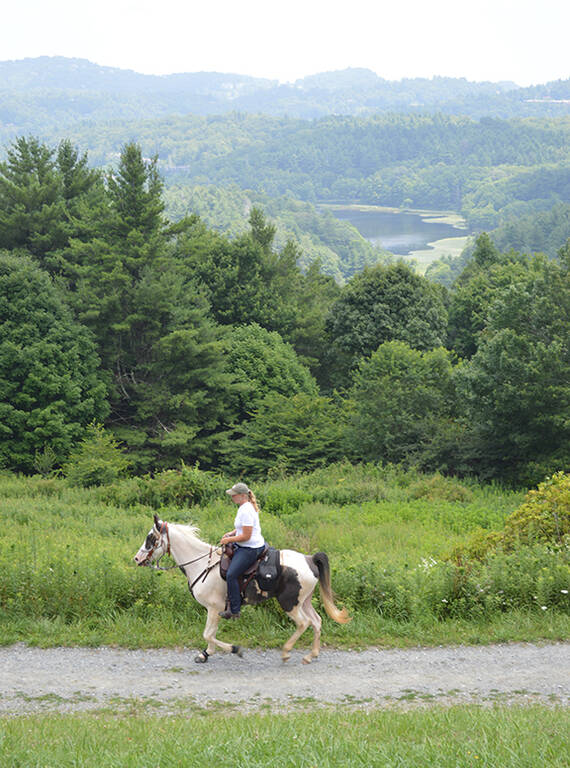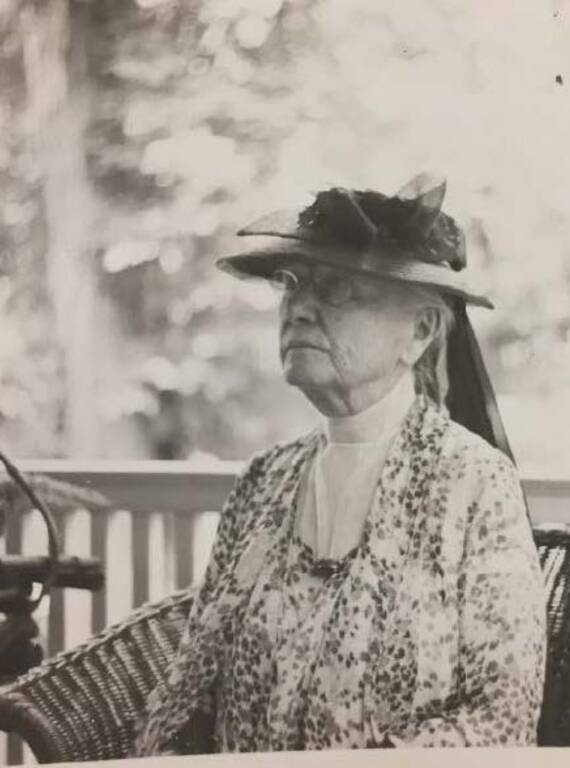What’s one of the most popular stops along the Blue Ridge Parkway? Moses H. Cone Memorial Park and its Flat Top Manor — a 23-room mansion built as a country gentleman’s estate in 1901 by the world’s leading manufacturer of denim.
Son of a Jewish-German immigrant, Moses Cone and his wife, Bertha, built Flat Top Manor on a 3,500-acre estate as their summer retreat from Baltimore.
Yet it was Bertha who, as a widow, ran this property and its 32,000-tree apple orchard in the North Carolina mountains for nearly 40 years and ensured the grounds would be preserved as a place of recreation for future generations.
The Blue Ridge Parkway runs 469 miles and links Shenandoah National Park with Great Smoky Mountains National Park. At Milepost 294 near Blowing Rock, visitors to the Moses H. Cone Memorial Park can enjoy walking or horseback riding on the estate’s 25 miles of carriage roads, taking in the mountain scenery and cool breezes or shopping at Southern Highland Craft Guild housed on the manor’s ground floor. The manor house is listed on the National Register of Historic Places for its architecture, landscape and social history.
A recent $2.4 million investment by the Blue Ridge Parkway Foundation and the National Park Service — a partnership that earned a 2022 Public Lands Partner Award from the Public Lands Alliance — has rehabilitated Flat Top Manor’s ornate exterior. Ranger-led tours of the property during the summer and fall give visitors a glimpse into the business and personal life of this wealthy couple with no children and the family members who became famous in their own right.
Here are 10 intriguing facts about Flat Top Manor and its people and why they’ve become treasures of the National Park System.
Take a virtual tour of Flat Top Manor
1. From immigrant roots to riches
Moses’ parents each immigrated from Germany. After marrying, they settled in Jonesborough, Tennessee, where they had 13 children — Moses being the eldest. His father, who had changed the family name from Kahn to Cone to seem more American, operated a retail grocery store. After the Civil War, the family moved to Baltimore to operate a wholesale grocery store, and Moses and his brothers joined the company as traveling salesmen in the South.
The brothers later formed their own company selling textile products. They gradually built a textile mill empire in North Carolina that supplied the world with denim, flannel and corduroy. People began calling Moses the “Denim King.”
Like other wealthy industrialists of the Gilded Age, Moses became a philanthropist and civic leader. He also built a country refuge — both as testament to his financial success and a place to connect with nature.
2. A lavish country manor
With architect Orlo Epps, the Cones built Flat Top Manor on the top of a hill — three stories high with nearly 14,000 square feet. Its Beaux-Arts design is said to have reflected patriotism and a rootedness to America. Only those with social standing were invited inside.

An ornate fixture for the carbide lighting system at Flat Top Manor.
© Linda Coutant/NPCAFlat Top Manor took two years to build. The Cones installed the latest amenities: telephones, a servants’ call system, a central wood-fired heating system and a carbide light system run by a gas plant behind the house. Bertha added electricity in 1927. The manor included 11 bedrooms and seven bathrooms with indoor plumbing for hot and cold water. Outdoor features included a bowling alley, tennis court and croquet lawn.
The Cones segregated their staff. African Americans, some of whom traveled with the Cones to and from Baltimore, worked the domestic roles of cooks, laundry maids, chambermaids, parlor maids, butler and chauffeur. They lived in house-servant quarters directly behind the manor. The estate’s year-round workers were white families, many of whom lived in inexpensive tenant housing Moses had built on the property — carefully sited so as to not disrupt the views from the manor.
3. An experimental orchard
A supporter of North Carolina’s commercial apple growers, Moses began planting 32,000 apple trees before his house was even built. His goal: to test what varieties grew well and could be stored and shipped easily. Moses also intended the orchard to help make his estate profitable.

The Cone apple orchards and Bass Lake, as seen from Flat Top Manor circa 1940.
NPSMoses consulted with state agriculture officials on various aspects of his endeavors. He grew about 80 varieties and entered his apples in state and world fairs.
More than 30 families lived on the estate in housing the Cones provided, and adults and children all worked at picking time — which, depending on the variety of apple, would run from late June through late fall.
Apples were stored in several apple houses built on the estate. One is still standing and can be accessed from the property’s lower carriage trails.
4. A love for the outdoors
To reconnect with nature, the Cones constructed two lakes on their property and built deer parks, walking trails and carriage roads with spectacular views of the mountains.

Horseback riding is a popular pastime on the 25 miles of carriage trails at Moses H. Cone Memorial Park.
Courtesy of Blue Ridge Parkway FoundationThe couple shared their property with the local community, opening the grounds daily from 8 a.m. to 6 p.m., although no hunting or flower picking were allowed.
In the early 1900s, Moses advocated for a federal Appalachian Forest Reserve that would protect North Carolina’s mountains and help restore them from excessive logging.
While congressional bills for such a reserve did not pass in his lifetime, millions of acres of western North Carolina would later become national forests as part of the U.S. Forest Service.
5. Widow-run for 39 years
Moses died from heart disease in December 1908 at age 51. He had no will. After more than two years of negotiations among Bertha, one of his brothers and court-appointed administrators, the brothers inherited the textile business and Bertha received the mountain estate.

Bertha Cone at Flat Top Manor.
Norman Lindau/Courtesy of Blue Ridge Parkway FoundationShe conveyed her stock in the company to a proposed Moses H. Cone Memorial Hospital in Greensboro, home of the company’s mills.
Bertha ran Flat Top with passion and strong business skills until her death at 89. Among her enhancements of the property, she opened a dairy, constructed an apple railway to ease transport of fruit crates up the orchards’ steepest slope, and bought more land.
She sold the orchard fruits to grocers and shared them generously with family and friends. The artist Henri Matisse years later said how much he enjoyed apples from Flat Top. Cone apples were shipped to soldiers overseas during World Wars I and II.
Bertha was known for keeping the property in pristine condition and giving strict instructions for its care during the winter months she spent in Baltimore. She was seldom alone. Her sisters, Clementine and Sophie Lindau, and sisters-in-law Etta and Claribel Cone, spent considerable time with her at Flat Top each summer.
6. The sisters’ Cone Collection of art
In 1897-98 after their father died, Moses’ sister Etta sought to cheer up their mother by redecorating the front parlor of their Baltimore home with original works of art. Moses contributed $300 for her first purchase in 1898, made during a trip to New York with Bertha. Until then, no one in the Cone family had shown interest in art. In following years, Etta bought numerous paintings by artists relatively unknown at the time: Matisse, Cezanne, Picasso and others.
Using their father’s inheritance and income from shares in the family business, Claribel and Etta traveled the world collecting art and making friends. Sometimes Moses and Bertha accompanied them, also purchasing art and fine wares. The sisters’ works crowded their apartments, with prints even stored in bathrooms.
The sisters intended that their collection, which grew to 3,000 pieces, be given en masse to an institution after their deaths. Claribel died first in 1928, with Etta passing in 1949. Etta’s will bequeathed $400,000 to the city of Baltimore to build a wing onto the Baltimore Museum of Art to house the Cone Collection, as it became known. The sisters’ purchases are considered one of the world’s most important art collections.
7. Tension with the U.S. government
Upon word in 1935 that the federal government planned to build a scenic road through the Blue Ridge, Bertha began a years-long effort to stop its construction on her property. Initial plans called for routing the Blue Ridge Parkway through the Flat Top Manor’s front yard and its orchards. Bertha wrote letters of protest to President Franklin D. Roosevelt, the director of the National Park Service and members of Congress.
She hosted Secretary of the Interior Harold Ickes at Flat Top, sitting with him on her porch to discuss how disruptive the Parkway plans would be to her estate. Perhaps tired of her outspokenness, federal officials agreed in 1939 not to build the Parkway through her property during her lifetime.
8. A ‘public pleasuring ground’
Following the Jewish concept of tikkun olam, or “repairing the world,” the Cones contributed greatly throughout their lives to the communities where they lived and conducted business. Bertha died at Flat Top Manor in June 1947. In her will, she left the estate to the trustees of the proposed Moses H. Cone Memorial Hospital in Greensboro. In 1949 construction began on the hospital, which still operates today. In accordance with Bertha’s wishes, all the home’s possessions were distributed to relatives, acquaintances, employees or charity.
She wanted the manor locked up and the grounds operated by the hospital as The Moses H. Cone Memorial Park — a “public pleasuring ground” that would allow her husband’s name to live on. Unsure of how to manage a public park, however, the hospital trustees donated Flat Top to the Park Service to become part of the Blue Ridge Parkway.
9. A challenge to the Appalachia stereotype
The home posed a challenge for Blue Ridge Parkway planners: The lavish mountain estate did not fit the myth they sought to cultivate of resourceful pioneers living in log cabins. Final construction of the parkway did cut through Bertha’s property after she died, but behind the house rather than in front.
Flat Top Manor is one of only five of the estate’s nearly 60 original buildings still standing. Due to limited maintenance funds and perceptions of what Appalachia should look like, the Park Service in the 1950s cut down the apple trees and razed the tenant homes, laundry house and other outbuildings. Although ill-fitting to the manor’s original design and purpose, a pioneer museum operated in the home until about 1970.
10. A property too grand to lose
Today, more than 250,000 people visit the Cones’ estate each year. Park Service funding and volunteer support over the decades have kept the lakes, carriage trails and manor in good shape and accessible to the public. Research by the Park Service, historians and others have contributed to the visitor center’s interpretive representation of the Cones and their estate.
And, donor support to the Blue Ridge Parkway Foundation, along with federal funding, made the 2021 rehabilitation to the manor possible — so that Moses and Bertha’s nature retreat can continue to fascinate people for years to come.
Want to visit?
The Moses H. Cone Memorial Park and Visitor Center is just outside the town of Blowing Rock, North Carolina — three miles north along the Blue Ridge Parkway from Julian Price Park, which has a campground, picnic area, hiking trails and boat rentals at Price Lake.
This report was informed by the National Park Service, Blue Ridge Parkway Foundation, Philip T. Noblitt’s book “A Mansion in the Mountains: The Story of Moses and Bertha Cone and Their Blowing Rock Manor” and Ellen B. Hirschland and Nancy Hirschland Ramage’s book “The Cone Sisters of Baltimore: Collecting at Full Tilt.”
Stay On Top of News
Our email newsletter shares the latest on parks.
About the author
-
 Linda Coutant Staff Writer
Linda Coutant Staff WriterAs staff writer on the Communications team, Linda Coutant manages the Park Advocate blog and coordinates the monthly Park Notes e-newsletter distributed to NPCA’s members and supporters.
-
General
-
- Park:
- Blue Ridge Parkway
-
- NPCA Region:
- Southeast
-